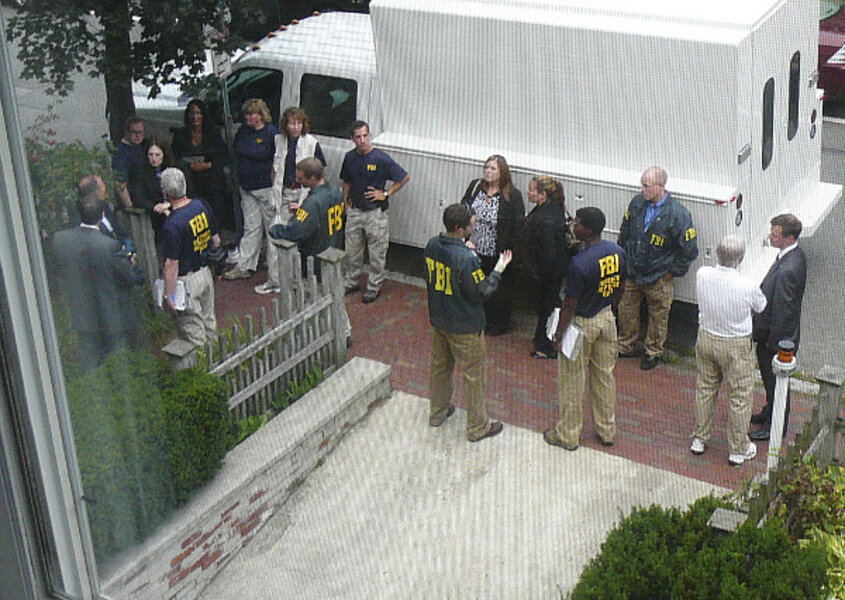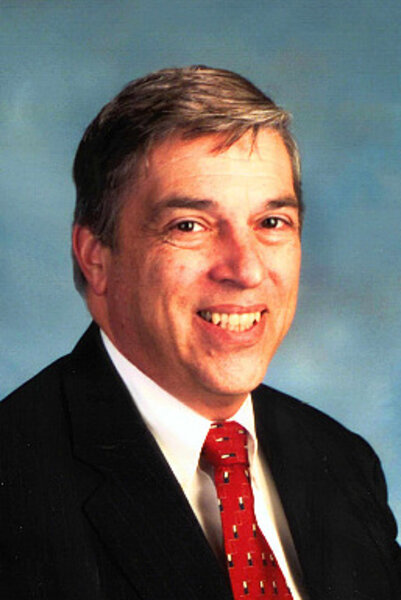Russian spies: High-tech gear, plus old Cold War methods
Loading...
| Washington
The accused Russian spies arrested by the US on Monday used a wide range of espionage techniques. Some were high tech, such as steganography – communication via encrypted text embedded in website photos. But many were cold-war-era golden oldies, such as brush-passes, in which agents hand off identical bags in crowded places; radiograms, which involve burst transmissions over shortwave transmitters; and that old favorite, the dead drop.
Why is it called a “dead” drop? Because it involves one person dropping off something at a pre-arranged location, and a second person picking it up after the first has left. If the two meet face-to-face it’s called a live drop.
Anyway, traditional methods were a hallmark of the KGB during the years of the Soviet Union. That appears to have persisted with the SVR, Russia’s intelligence service. Here are some highlights of that long history of tradecraft, as recounted by FBI historians.
IN PICTURES: Top 10 notorious spies
THE HOLLOW NICKEL. In 1953 the FBI obtained a curious artifact – a hollow nickel that contained a microphotograph of 10 columns of typewritten numbers. A newsboy had received the nickel in change while collecting from a customer.
The hollow nickel had been made from two coins with a tiny hole drilled through the “R” in the word “Trust.” For four years, US intelligence tried to decipher the numbers and solve the mystery of the nickel, to no avail.
Finally, in 1957, a key appeared in the person of Reino Hayhanen, a Soviet spy who defected to the US rather than return to the USSR. The KGB had supplied Hayhanen with a hollow Finnish coin for dead drops that was marked by the same tiny hole as the nickel. With this hint, the FBI finally decrypted the message, which turned out to be a welcome-to-the-US letter for Hayhanen from his Moscow superiors.
Hayhanen eventually led agents to one of his spy masters in the US, Col. Rudolf Abel. Convicted of espionage, Colonel Abel was swapped in 1962 for captured US U-2 pilot Gary Powers.
WALKIE-TALKIES AND FAKE BRICKS. In 1970, a Grumman aircraft engineer who lived in the New York area struck up a friendship with a Russian who introduced himself as Sergey Petrov. Petrov claimed to be a translator of scientific documents at the United Nations.
Petrov was quite interested in the engineer’s work on the design of the new F-14 Navy fighter. He asked for any documents related to the plane – and said he’d pay the engineer a stipend if things went well.
The engineer went to the FBI. Over the next few months, he and Petrov met at Long Island restaurants for document exchanges. The Soviet spy gave his new friend a special camera, so he could bring pictures instead of actual paper. Eventually he outlined a plan in which the engineer would place microphotos in fake bricks made of plaster of Paris. Then the engineer would contact Petrov on a walkie talkie and tell him when he had dropped the brick at a location near the Tappan Zee Bridge, north of the city. This would eliminate the need for dangerous face-to-face meetings.
The FBI arrested Petrov shortly thereafter. He was indicted on espionage charges in July 1972. In August of that year, the White House told the courts to drop the charges. Petrov was freed, and he returned to the USSR.
“It was decided by top US officials that this dismissal would best serve the national and foreign policy interests of the United States,” concludes an FBI summary of this case.
RAMON’S HOMEMADE TRADECRAFT. Robert Hanssen was a veteran FBI counterintelligence agent who spied for the Soviet Union, and later Russia, from 1979 to 2001. His acts did dreadful damage to US security and caused the death of a number of US intelligence assets inside the USSR.
One reason he was able to carry out 22 years of such high-level espionage was that he was careful to conceal his identity and place of work from his Soviet handlers. That way he could not be turned in by any US mole within the KGB.
The Soviets knew him by the code name “Ramon Garcia."
Hanssen began his career as a turncoat by writing the KGB a letter. He subsequently refused all Soviet offers to meet in a third country and all Soviet tradecraft. He was an FBI counterintelligence agent, after all, and figured he would survive best by designing his own routines.
Hanssen never showed any outward signs that he was receiving large sums of money, as he knew that might raise FBI suspicions. He set his own dead drop locations, which included a footbridge near Vienna, Va., a wooden utility pole near a Vienna bus stop, and the top of a “Foxstone Park” sign in the same area.
An FBI hunt for a suspected internal leaker finally discovered Hanssen after years of pursuing false leads. As then-FBI director Louis Freeh pointed out when the arrest was announced on Feb. 20, 2001, Hanssen’s homemade tradecraft had been so effective that American counterintelligence learned his real name before his Russian spymasters did.
“They are learning of it only now,” said Director Freeh that day.
Hanssen, aka “Ramon,” is now serving a life sentence at the Supermax federal penitentiary in Florence, Colo.
IN PICTURES: Top 10 notorious spies
Related:
Russian spies case: There goes the 'reset' of US-Russia relations?






